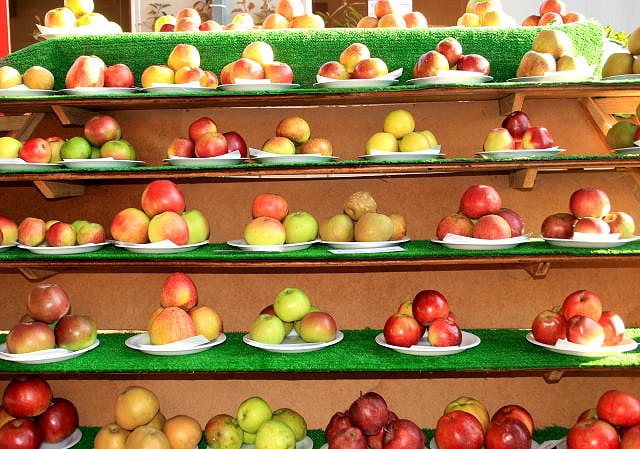Most of us have eaten Red Delicious, Granny Smith, and Macintosh apples. If we’re lucky, we may have also had a few other types of apples as well –Honeycrisp has had a major moment the past few years – but most of us have probably not tried as many kinds as writer William Mullan.
That’s because Mullen is researching as many types of apples as he can get his hands on, and getting photographs of them.
He spoke with Atlas Obscura about his fascination with apples, which began when he was a teenager growing up in the UK and grew into a full-blow obsession when he was forced into a dietary change for health reasons. Now he satisfies his sweet-tooth on apples.
So what’s the big deal? We checked out Mullan’s Instagram, and he’s really onto something.
https://www.instagram.com/p/B7Ol-7OBq6x/
In addition to taking beautiful photographs of apples from all over the world, Mullan delves deeply into the apples’ histories, discussing how they’re grown, bred, and what they taste like. His descriptions of apples are gorgeously detailed, and he’s sold books and prints of his images.
https://www.instagram.com/p/B6GK0vXBtkK/
Mullan also went into detail about how and why only certain apples make it to consumers’ hands at grocery stores. Big agriculture and market demands are the main reasons.
https://www.instagram.com/p/B5iLpRSBGfR/
Some apples truly have their own personalities.
https://www.instagram.com/p/B40IPy-BwhL/
Other apples are works of art that stand on their own.
https://www.instagram.com/p/B2j4a_thrqa/
Farmers have avoided certain types of apples because they are more likely to pick up diseases, they come from trees that naturally produce fewer apples, or they have fragile skin.
https://www.instagram.com/p/BzeWXyqhVMc/
Mullan’s interest has garnered him a steady following. Thanks to his research and photographic work, we get to be exposed to beautiful varieties of apples from all over the world. Click here to check out more of his photographs.
What do you think of Mullan’s work and efforts to introduce the world to more apples? Feel free to comment below so we can read your opinion!






